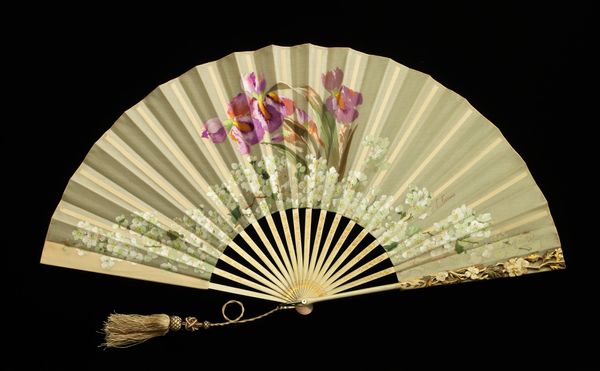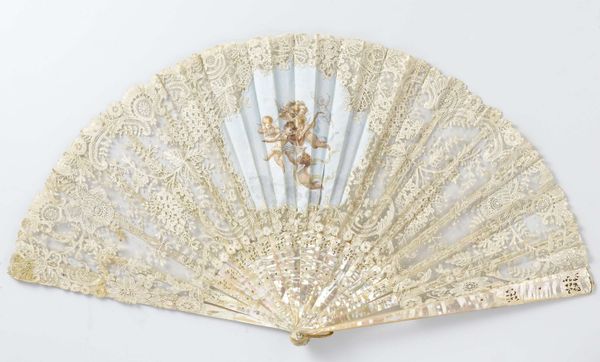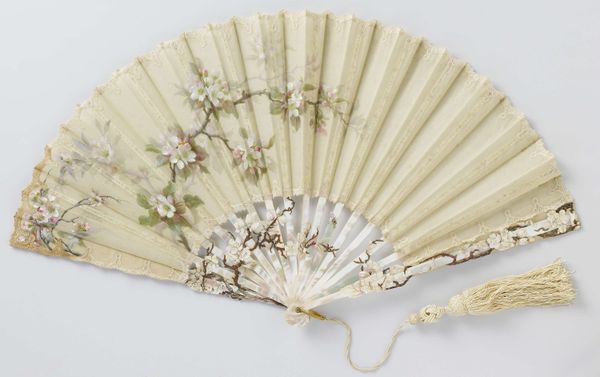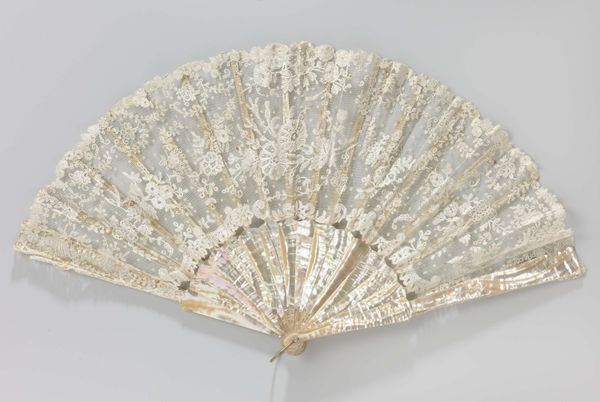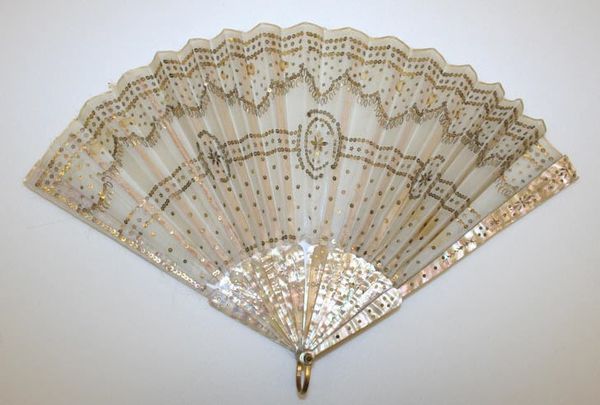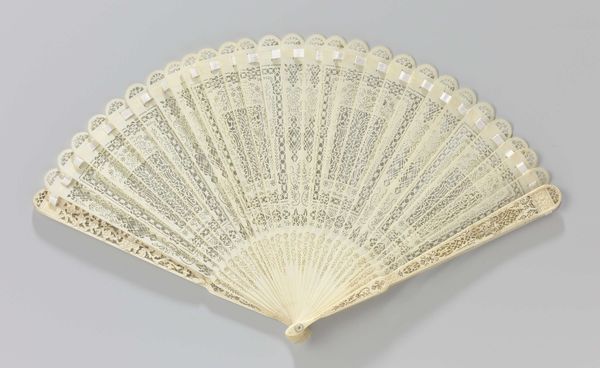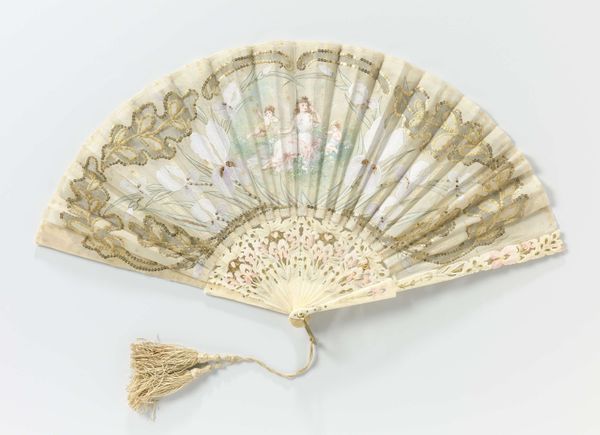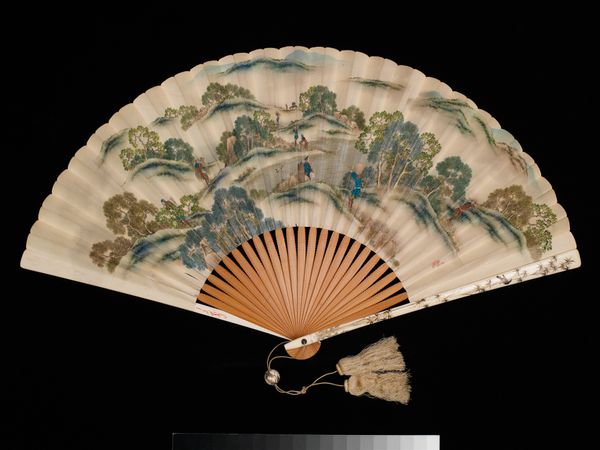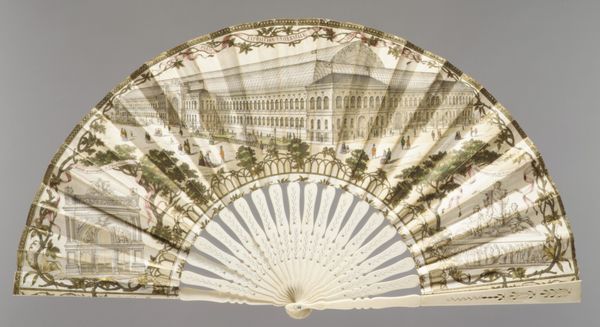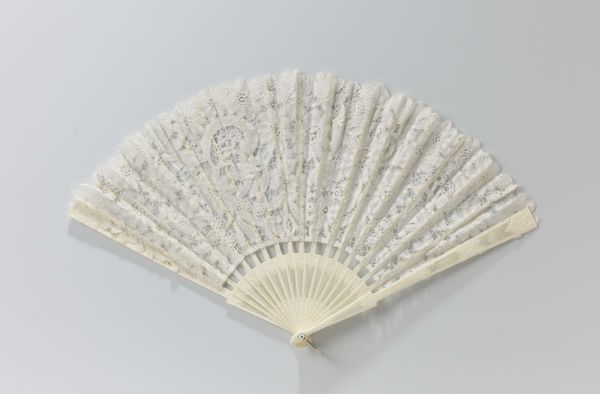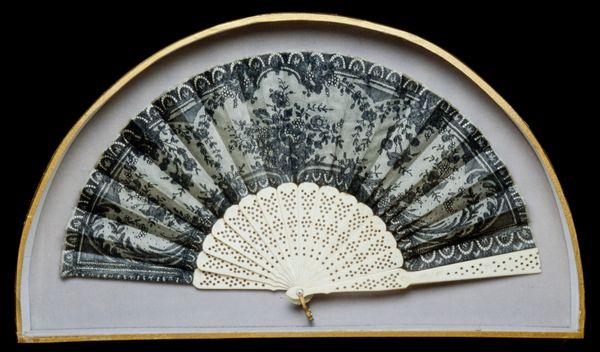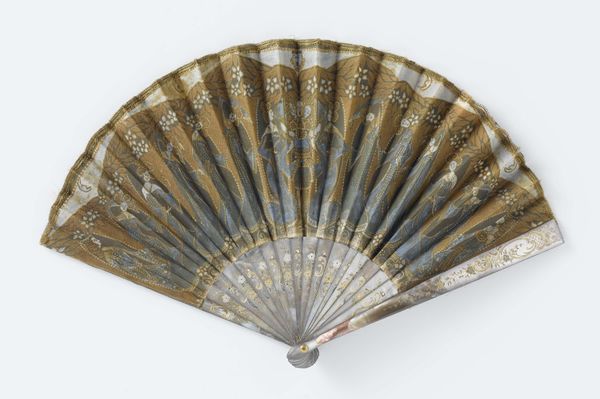
silk, textile
#
silk
#
textile
#
aesthetic-movement
#
decorative-art
Copyright: Public Domain
Editor: This is a "Fan" made in the 1880s, made from silk and other textiles, and currently housed at The Met. The lace trim feels so delicate and refined; it's giving very demure vibes. How do we read an object like this today? Curator: The fan, particularly within the Aesthetic Movement, goes far beyond a simple accessory. Think about the context: the rigid Victorian era. It could be a subtle tool for women, signifying both refinement but also, and more importantly, a subversive means of communication in a society that severely restricted female expression. Editor: Communication? How so? Curator: Fan language was very coded and intentional. A woman could signal interest, disinterest, even availability with just a slight movement. Moreover, it served as a potent symbol of identity within very strict gender roles. Who was wielding that power, and what were they signalling? Consider also that silk production, at the time, often had roots in exploitative labor practices abroad, so owning a silk fan can also signal specific forms of privilege. What statement is being made with this kind of ornamentation, during this specific moment in history? Editor: That's such a different perspective from just seeing a pretty object! I hadn't considered the economic and social power linked to its materials, either. Curator: Exactly. These objects aren’t neutral. They’re carriers of histories, both beautiful and complicated. The question becomes how we engage with them in a way that acknowledges those complexities. Editor: I’ll definitely be looking at decorative arts differently now. It is kind of amazing that so much could be communicated without a single word. Curator: Precisely. It forces us to look more closely at what they really meant and continue to mean, even now.
Comments
No comments
Be the first to comment and join the conversation on the ultimate creative platform.
